Michael Mohammad, a high school science teacher in Elmbrook School District in Wisconsin, is passionate about personalizing learning for all learners. Mike writes a blog post, Mo Physics, Mo Problems about his own journey to personalize learning and building his PLN.
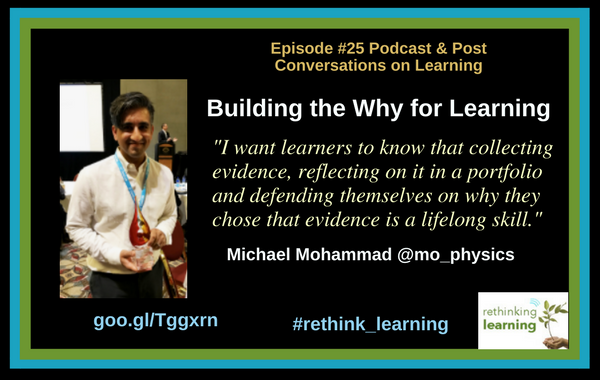
Podcast: Play in new window | Download
Mike shares what happens in his class on social media. I’ve been part of Mike’s PLN for several years and have enjoyed what he shares with the world. When he first learned about personalized learning, he decided to try it right away with his kids. I was pretty excited about the results and just wanted to learn more about what his kids were doing in his class. So it just made sense to invite Mike to join me in a conversation. Below are excerpts from the podcast:
Can you share a little about yourself and your background? Why did you go into teaching?
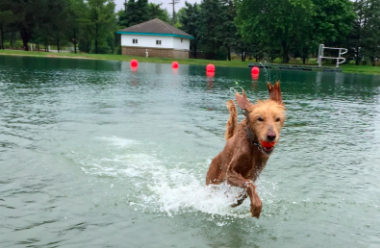 I grew up in Wisconsin. I live outside of Milwaukee, WI with my wife and my new puppy who is a Golden Doodle named Georgia. My parents are immigrants from Pakistan and they pushed me to be a doctor. My mother never went to school and my father became a pediatrician. I actually did work that would take me down the path to becoming a lawyer or doctor. I always loved school, because it came easy. I was good at “doing school”, but enjoyed English because it allowed me to create and be imaginative. Science was “sit and get”, English was creative thinking. It was a big leap for me to push to become a teacher. I found in college that I really liked science education and it really made that connection to who I am. There was no pushback once they saw I was happy. My parents are very happy with my career choice.
I grew up in Wisconsin. I live outside of Milwaukee, WI with my wife and my new puppy who is a Golden Doodle named Georgia. My parents are immigrants from Pakistan and they pushed me to be a doctor. My mother never went to school and my father became a pediatrician. I actually did work that would take me down the path to becoming a lawyer or doctor. I always loved school, because it came easy. I was good at “doing school”, but enjoyed English because it allowed me to create and be imaginative. Science was “sit and get”, English was creative thinking. It was a big leap for me to push to become a teacher. I found in college that I really liked science education and it really made that connection to who I am. There was no pushback once they saw I was happy. My parents are very happy with my career choice.
What are the best things about teaching science and high school for you?
I teach 10th through 12th-grade Physics. The best thing about science is that you can really make it hands-on. It’s not that hard of a leap to make learning hands-on for students and it’s a great place for students to take risks. When we talk about engineering and designing, it is fantastic. I see the world through science. I am able to take risks without fear. This is science at its best: when we are challenged to think, do, and learn.
Why is it important to personalize learning? Can you share how you are creating a space for every learner?
Learners have passions and aspirations. I need to bridge their passions and aspirations to the content.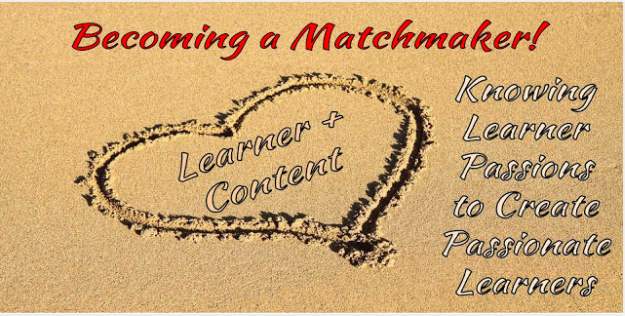
It comes down to my Why statement. When I think about when I was a kid doing things just to do them. I cannot tell you a single thing I did in my physics class in high school except the day we went to Great America. When I polled my students to see if they knew what physics was, 90% had no clue. I wanted my students to know how physics connects to their lives not just the world at large. I live physics and want them to experience it the same as I do. Students have to do hands-on with physics or it is not personal to them. Everyone is different. They need to talk about who they are. It doesn’t matter what subject you teach or population, there is a spectrum of abilities and preferences. It is about removing the obstacles from learning and building the “why” for learning. Teaching learners to know how to learn for themselves rather than simply absorbing information.
What are some strategies you are using to build a culture of learning in your classes?
On the very first day, I ask students to build portfolios using Google Sites starting with a passion page. They are asked to find four videos that talk to you about who you are, your passions, what you want to do, etc., and embed those on the page. Then they write a paragraph about the videos and how they connect to you as a person. This post talks about the portfolio and how it changed over the last term. http://mophysicsmoproblems.blogspot.com/2017/11/portfoli-o-yeah.html
I enjoy going through the portfolios and learning about them and what they love beyond school. Then I have them create a Learner Profile that you shared with me and that really helps them understand who they are as a learner. After 9 weeks, they go back to reflect on their passion page and most usually want to update the videos because of how much they changed. I tell them to keep the old videos and just add to them. The portfolios also include standards and evidence of learning. I shared with my kids how I needed a portfolio when I was learning to become a teacher. I wanted them to know that collecting evidence, reflecting on it in a portfolio and defending themselves on why they chose that evidence is a lifelong skill. I want them to have a voice and own their learning. It’s not about me. It’s about them. Here’s a link to Hannah’s Portfolio: https://sites.google.com/elmbrookschools.org/hannahphysicsportfolio/home
Can you share some of the projects you do with your kids?
The biggest project I have been working on is a year-long Passion Project. They choose something they are passionate about and it is my job to find the physics behind it. The night before exams, we’ll have an expo with all the classes that is open to the community including parents. Students are responsible for presenting their learning. Instead of just presenting to your class, I want them to experience what it is like to present to an authentic audience. I have 90 kids so I split the presentations with 45 presenting first and then the other half after. I want them to have a chance to be in the audience as well so they can ask questions and give feedback to their fellow learners.
Click on this link to Thinglink to be able to access all the projects:
Why does your PLN matter so much to you?
I love getting on social media and listening to podcasts. My learning was limited to the building I was in. Now my PLN provides me ideas on the edge of innovation and how to define what’s possible. I learn about resources for classroom use and strategies for communicating to staff. I also learn about new technology and how to hack it. I use social media to challenge and celebrate my learners.
I found your blog, Mo Physics, Mo Problems. Here are two posts to share:
Overarching Standards to Drive Personalization.
What are the essentials of NGSS science practices? If standards are being written into narrowly framed learning targets, everyone can’t get through them. It is important not to be specific to products, but to be specific to skills and big ideas. Then students can find their own path to mastery. Don’t define the problem, help learners define the problem.
Practices in the Classroom are Practices for Life
Habits of Mind! Many standards (CCSS, NGSS) have habits of mind ingrained in practices. We need to highlight these components not simply the content standards.
Can you share one last thing for our audience?
The Universal Design for Learning (UDL) lens unlocked understanding of Personalized Learning for my peers at my school. It cut through mixed messages and put it back in simple questions to ask about learners in your classroom. Starting with the Why, then the what and how.
****
 Mike Mohammad was born and raised in Sheboygan, WI. Mike attended UW Madison where he received his degree in Secondary Education in Broadfield Science and Biology with additional certifications in chemistry and physics. He’s been a secondary educator for 17 years, 13 of which have been at Brookfield Central High School in Brookfield, WI. His interests in education focus on putting students at the center of their own learning experience. He lives in Brown Deer, WI with his wife and dog.
Mike Mohammad was born and raised in Sheboygan, WI. Mike attended UW Madison where he received his degree in Secondary Education in Broadfield Science and Biology with additional certifications in chemistry and physics. He’s been a secondary educator for 17 years, 13 of which have been at Brookfield Central High School in Brookfield, WI. His interests in education focus on putting students at the center of their own learning experience. He lives in Brown Deer, WI with his wife and dog.
Email: mohammam@elmbrookschools.org
Website: http://mophysicsmoproblems.blogspot.com/
Twitter: @mo_physics
Mike winning Trailblazer Award from the Institute for Personalized Learning (picture in the graphic above is when he received the award): http://www.elmbrookschools.org/brookfield-central-high-school/news-details/~post/mike-mohammad-receives-trailblazer-award-20171103
*****
For all of the Rethinking Learning podcasts with Barbara Bray, click on the podcast tab at the top, the logo below, or go to https://barbarabray.net/podcasts/
Go to this page for resources, questions, and more information about Barbara’s new book, Define Your WHY.




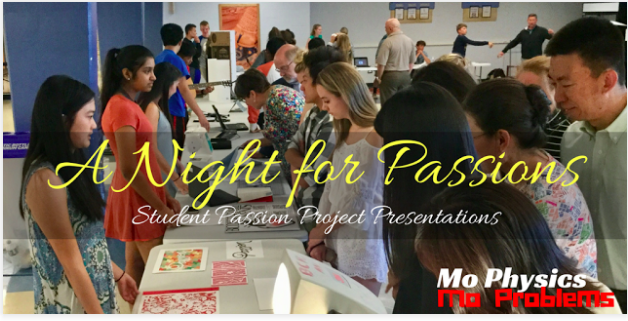
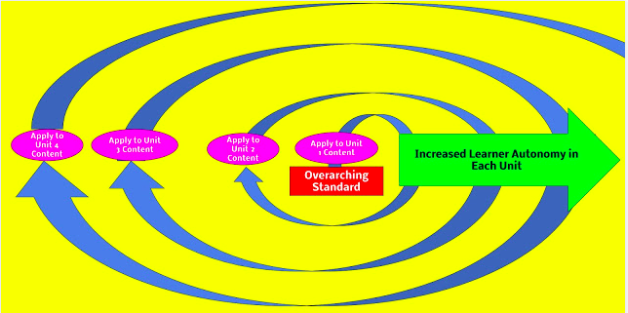
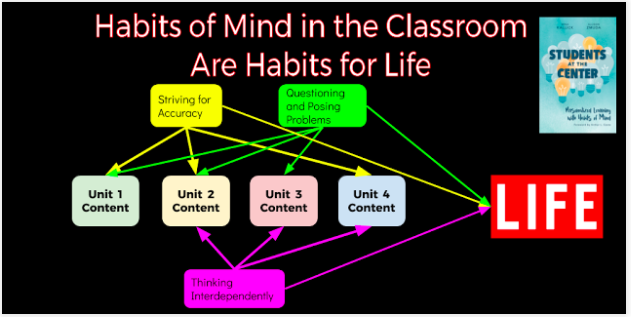




[…] Michael Mohammad, a high school science teacher in Elmbrook School District in Wisconsin, is passionate about personalizing learning for all learners. Mike writes a blog post, Mo Physics, Mo Problems about his own journey to personalize learning and building his PLN. Mike shares what happens in his class on social media. I’ve been part of Mike’s …Read More […]